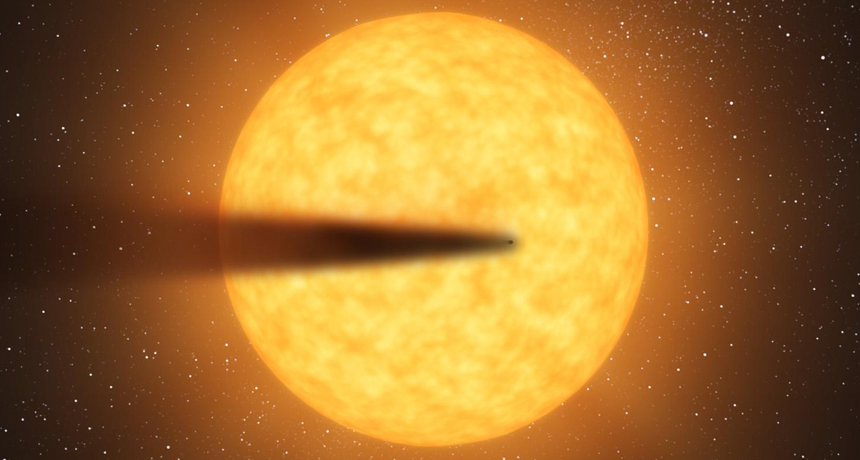Dust cloud, tail could explain exoplanet’s odd light pattern

This artist's illustration of the unconfirmed exoplanet KIC 12557548 b shows it transiting its star. Some astronomers now think the planet could have a cloud of dust enveloping it along with a cometlike tail, shown in this image.
JPL-Caltech/NASA







